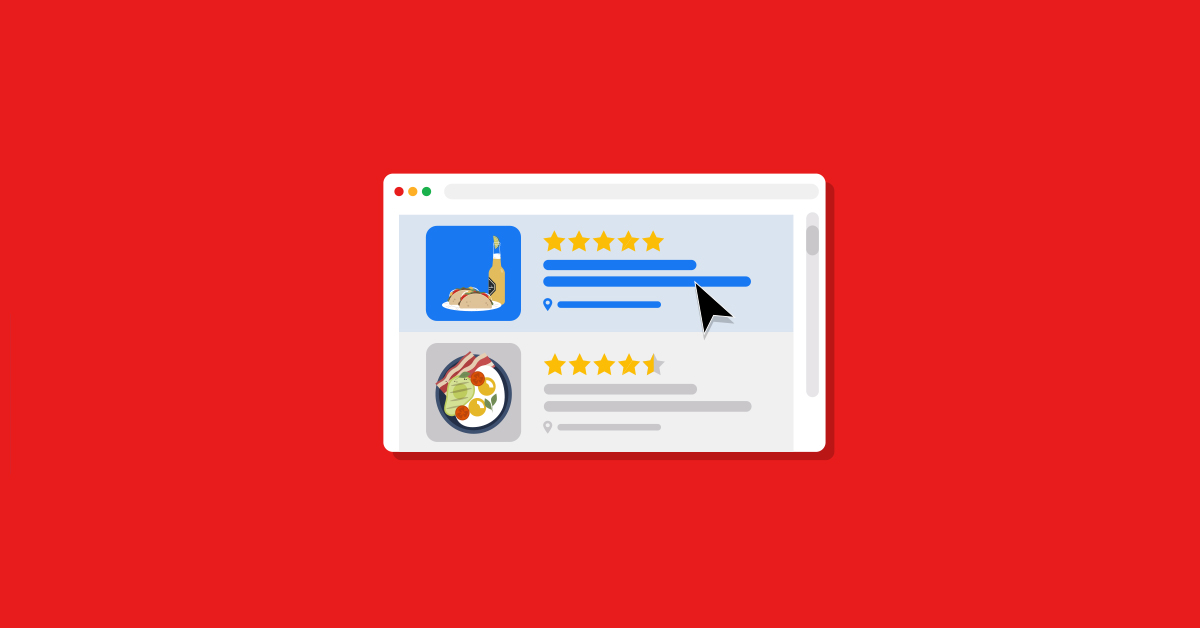
When I was first handed the reins to a business’s supply chain, I was excited. In my head, I had visions of myself wheeling & dealing like some bootleg Gordon Gecko, only with, like, fruit & veg suppliers, not the high-flying clientele of the upper echelons of the finance world. Think of it more Wolf of King Street than Wolf of Wall Street, but a cunning wolf nonetheless.
And okay, maybe that was just my flair for the dramatic, but it didn’t really pan out that way.
As a young, naive venue manager, I quickly found myself outmaneuvered by my much more experienced suppliers. Any dreams of driving down their prices by playing hardball were dampened by the realisation that I needed them more than they needed me.
I eventually got into the swing of things though (there’s only so many times you can be laughed out of a phone call before you change tactics), and my negotiating skills improved…a bit.
I was soon the master of my supply chain, and you can be too, by reading on as I break down my quick-start guide to supply chain management covering these basic areas:
- What is supply chain management?
- Supply chain and inventory management: two sides of the same coin
- How to get the best from your supply chain
- Allow me to sell you on how good supply chain management can boost sales
What is supply chain management?
So, you want to feed the masses? It’s a noble pursuit, and one many before you have undertaken, and many more will long after we’re gone and the machines inherit the earth.
And, I mean, how hard can it be, right? You buy some ingredients, cook ‘em all up, and put it on a plate. We do it every day already and call it dinner. Simple.
But here’s the rub; it’s anything but simple.
You see, supply chain management involves actively monitoring and managing your supply chain to maximise efficiency and value.
And that supply chain is made up of many different links, with the sole purpose of getting raw ingredients from producers to customers, each one synchronised with the next, and working as one.
And just like every other area of management, your supply chain needs attention, and thought to keep it from breaking. Because if one link breaks, it can send your whole operation careening towards a cliff like a runaway caravan, untethered and destined to settle as a pile of twisted rubble on the rocks below.
To give you a general idea, here’s a step-by-step look at what’s involved in this proverbial caravan:
- Sourcing raw materials: Finding suppliers who specialise in specific areas like, produce, milk, meat & eggs, dry goods, and packaging.
- Logistics: Managing the delivery of these goods to your restaurant either via the supplier themselves (if you’re in a metropolitan area, this is usually the case), or a delivery company.
- Production: Essentially, taking the inedible, and making them edible, or cooking stuff, if you want to get technical.
- Distribution: Delivering your products to the customers, be it as simple as taking a plate to a table, or in these troubled times (cringe), organising delivery to their homes.
- Inventory management: Keeping track of supplies to know when it’s time to reorder them and how much to order.
This imperfect world is out to get you
In a perfect world, once you establish your supply chain by making deals with suppliers, everything will go smoothly. Unfortunately, the world is not perfect (I’m looking at you, network television), and so there will be some inevitable roughness to counteract the smooth.
For example, because of Earth’s unwelcome New Year’s guest that just won’t leave, COVID-19, many people involved in agriculture and food distribution couldn’t work due to unsafe conditions and lockdown measures.
This meant that when restaurants were ready to reopen after lockdown restrictions were lifted, there were fewer raw ingredients available, so restaurants weren’t always able to get enough ingredients to meet customers’ demands.
Fruit and vegetable supplies were also affected by adverse weather conditions such as excess rainfall, or cyclones along the East coast.
And because items were in low supply and in high demand, prices went up. According to the Australian Bureau of Statistics, the price of vegetables rose by 5.5%, and fruit by 4.7% between March and June 2021.
All of this leads to one thing; restaurants raising their prices.
It’s easy to see how this kink in the restaurant supply chain has the potential to make a significant impact on daily business operations.
Supply chain and inventory management: two sides of the same coin
I don’t think anybody has sold out of food as many times as I have. Honestly, I really don’t.
That’s not me bragging, by the way. I was just really bad at keeping track of my inventory.
But inventory management is an important part of the supply chain. It helps you keep your customers happy, your kitchen running smoothly and, most importantly, food on the table.
Too often did I have to do a quick run to the shops to stock up on supplies. This is really bad, by the way. Not only did it cost me time, but I was paying full retail price for ingredients like a damn fool. Surely I’d learn soon enough?
Now, good inventory management involves keeping track of what ingredients and supplies you have in stock so you know when you’ll run out and need to order more. It informs your demand and purchasing decisions.
The better you manage your supply chain, the less you need to spend on inventory. And when you can make purchasing decisions based on actual data, rather than a broad guess, it’s easier to order what you need, nothing more and nothing less.
How to get the best from your supply chain
So, what should you be doing to manage your supply chain properly?
Gather ‘round, because here’s a few hot tips to get the best out of your supply chain:
- Price shop for the best deals, Make calls, send emails, gather PDF after PDF of product lists, but always get a quote. You don’t have to play hardball with your suppliers (believe me, I know) to get the best deals. Sometimes they’ll be happy for the easy exchange.
- Reevaluate suppliers often. If something’s not working, change it. Has the quality of your produce dropped off? Find a new vege guy. Is your sourdough more holy than the Vatican on Easter Weekend? Kick ‘em to the curb! Flipside, if a supplier is delivering above and beyond expectations, see what else they can do for you. Nurture the good relationships, it pays off.
- Join a collective. It’s not just for commies and postal staff, there’s power in numbers. By joining a group purchasing organization, you can get better deals on supplies than you could on your own.
- Streamline your supply chain by working with suppliers that can take care of more than just one step on your chain. For example, look for restaurant food suppliers who can provide ingredients and deliver them to you, instead of making you pick them up.
- Weigh the pros and cons of doing things yourself. Evaluate which steps of your supply chain are best kept in-house, and which ones are worth outsourcing. Do you have green thumbs and a whole bunch of land? Firstly, how are you affording that? Secondly, try your hand at growing some of your own fruit and veg. Not afraid of meeting your demise like that kid in My Girl? Keep bees and cop a bunch of honey that you can both use in your kitchen, and sell. Fancy yourself as a handy baker? It’s way cheaper to make your own bread than to buy it (it’s flour & water, people).
- Make sure you have enough supplies for the popular dishes. What’s worse than offering a new menu item and no one being interested in it? Many people being interested in it but not being able to buy it because your restaurant has run out of the ingredients to make the dish (in my house we call that doing a ‘Graeme’). While exclusivity has its perks when created deliberately, when it’s created by accident, it’s just a bad business move.
- Boost restaurant efficiency with software. Restaurant technology, like supply chain management software and inventory management software, is making the tedious, but important, tasks of monitoring inventory, reordering restaurant supplies, and communicating with suppliers easier. These tools can cut down the time it takes to do these things. Plus, if your restaurant POS system has inventory management tools built in, or integrations with supply chain management solutions, you can even automate many of these steps.
Allow me to sell you on how good supply chain management can boost sales
Restaurant supply chain management is important because doing it well can lead to business benefits — namely, more sales and higher profitability. But how?
First, when the links in your supply chain can share information, they can collaborate better. This collaboration ultimately gives you more control over your business, so you can increase profit margins more easily. Collaboration also reduces risk, which saves you money.
Let’s say, for example, that your restaurant purchases bread from a local bakery instead of making it in house. If you learn that there’s a shortage of flour, and the bakery will therefore increase prices, you can reduce costs by either removing bread from your menu while flour is in high demand and low supply, or looking for an alternative.
Second, supply chain efficiency helps you spend less on inventory. The more you know about where your restaurant supplies come from, what they cost, and how shortages will impact you, the better informed you’ll be when making purchasing decisions.
Finally, a streamlined supply chain keeps you in the know and makes it easier for you to inform customers of disruptions in service or supplies. For example, if your restaurant does a killer bruschetta, but you know that tomato season is coming to an end (shortest season ever, am I right?), you can keep customers happy by giving them fair warning or by marketing alternatives. By anticipating and working around seasonal produce, you can keep customers happy. And when customers are happy, they’ll keep coming back for more.
It’s time to forge your own chain
So, you’ve made it through this article. Congratulations, you have the information you need to tackle restaurant supply chain management like an industry veteran.
You’ve learned to keep your chain free of kinks by keeping on top of your inventory management, your suppliers, and your raw ingredients.
Now you may go forth and build relationships with food suppliers, keep an eye on market reports, and look for software that can help you streamline your supply chain and restaurant logistics.
Godspeed, and good luck.

News you care about. Tips you can use.
Everything your business needs to grow, delivered straight to your inbox.


